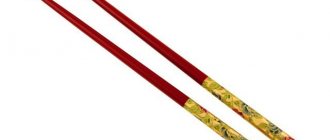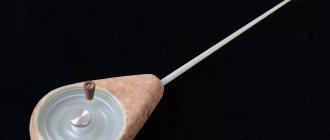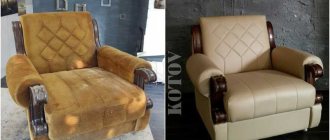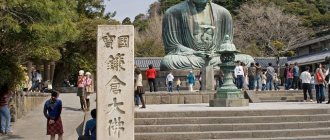The Japanese bath has little in common with traditional European baths and saunas.
The process of ablution in the countries of the East belongs to completely different cultural traditions, the history of which goes back many centuries. This is not just a hygienic procedure - it is a ritual designed to preserve the health, beauty and youth of the body, as well as inner spiritual harmony and tranquility.
Historical summary and traditions
Ofuro has big differences from the classic Russian bath or Finnish sauna. This is due to the worldview of the Japanese. Since the first soap was made from slaughtered animals, it was not used in Japan due to the prevailing Buddhist philosophy.
To cleanse the body of dirt, the Japanese used very hot water. With such hygienic procedures, detergents were not needed.
The first bath complexes were located at hot springs. Wealthy landowners installed Japanese bathing barrels near their homes. Gradually, public baths called sento began to appear.
Before and after the battle, any samurai had to visit ofuro. Initially, only feudal lords, rich peasants, landowners, and merchants visited the bathhouse, but gradually they became available to everyone. Previously, there were no divisions into women's and men's baths; people visited public baths.
Images of Mount Fuji in sento
Many sento sell milk at the counter at the entrance or in the locker room. Drinking milk after a bath is a special Japanese custom. Often in sento you can see an image of Fuji painted on the wall, or a pipe serving as a hood or chimney, these are some kind of symbols of sento. However, in recent years, paintings on walls can be seen less and less often, and at the moment (March 2015) there are only three masters of such paintings left.
To get to know the Japanese sento culture better, we can recommend the manga comic “Thermae Romae” and the film of the same name based on it. During the course of the story, an ancient Roman engineer building Roman baths accidentally ends up in modern-day Japan and receives information about the culture of sento and onsen, which gives him new ideas for constructing Roman baths. It amusingly describes the fictional deep connections between Roman baths and Japanese baths.
This manga also exists in translation into seven languages, including English, Spanish, French, and Chinese. The film “Thermae Romae I”, released in 2012, received the audience award “My movie First award” at the Far East Film Festival, and the second film, “Thermae Romae II”, released in 2014, received warm responses in North America, Italy and other countries.
What are the benefits and harms of a steam room?
The positive effect of the Japanese bath on the body has been scientifically proven. Useful properties of the steam room:
- improvement of breathing, blood microcirculation;
- skin rejuvenation;
- cleansing the body of waste and toxins;
- normalization of liver and kidney function;
- removing excess fluid from the body;
- removal of edema;
- acceleration of metabolic processes.
- strengthening the immune system;
- getting rid of excess weight;
- elimination of joint pain.
Since high temperatures affect the body when staying in a Japanese bath, you cannot visit it if you have some diseases. It is recommended that you visit your doctor in advance to get recommendations.
Bathroom
In the transition from the locker room to the onsen there are sometimes washbasins with mirrors, next to which you can wash your face or fix your hair. This is the ideal place and time to secure long hair with an elastic band or pin, the visitor should not soak it in the general bathing area.
The best place to wash your body is in the shower. A row of shower stalls or taps is located along the wall. Under them you can always find stools, bowls or buckets. Each person takes a chair and washes well. Visitors carefully wash every part of the body and hair, douse themselves with water, and sometimes repeat the procedure from scratch several times. At the same time, every local resident saves water, so they collect it in a bucket whenever possible. This is a public place where everyone wants to be in spotless water, so the body needs to be thoroughly washed and rinsed.
Types of steam rooms
There are 3 types of Japanese baths:
- furaco;
- ofuro;
- sento.
Furaco
The general health-improving set of procedures when visiting a Japanese bath begins with this steam room. Furaco is a large barrel filled with hot water. Peculiarities:
- The average diameter is 1.5 meters. Height - up to 130 cm.
- Water temperature - 45°C.
- Inside the barrel there are benches on which you need to sit.
- The stove that heats the water is installed next to or under the barrel.
- The capacity is designed for several people. If the visitor is alone, he can sit in a barrel, reclining.
- Various herbs are often added to water to enhance the healing effect.
Ofuro
Ofuro is a large, rectangular box made of wood that is filled with hot sawdust or heated river pebbles. A man plunges into a box, his body is covered with sawdust. Peculiarities:
- Ofuro is visited after furaco. Between these two procedures there should be a break for rest.
- Suitable sawdust is oak, linden, cedar.
- Sawdust is soaked in essential oils of various plants.
- The average sawdust heating temperature is 60°C.
- The length of the box is 2 meters.
- The average amount of sawdust is 50 kg.
The duration of the procedure is 30 minutes. However, if the general condition begins to deteriorate, it must be stopped in advance.
Sento
This is a public bathhouse that looks like a Japanese temple. Inside there are swimming pools with hot water, relaxation areas, and massage loungers. The building is divided into men's and women's areas. Peculiarities:
- The inside of the sento is decorated with various patterns, paintings, and hieroglyphs.
- In the women's section of the public bath there are changing tables for children and mirrors.
- The water temperature in the pools is 55°C. You can stay in them for no longer than 15 minutes at a time.
How do Japanese baths work?
Some pools can accommodate up to 100 people.
History ofuro
It is believed that the first ofuros were built at the dawn of Buddhism. The Japanese did not use soap as a matter of principle, since it was necessary to kill animals to make it. Therefore, in order to wash well, it was necessary to swim in hot water. Also, the emergence of the Japanese steam room is associated with a specific climate, when, due to high humidity, people often warmed themselves with improvised means. One of these were barrels filled with sawdust. To keep warm, the barrels were covered with lids with holes for the guest's head.
The Japanese believe that ofuro is the best solution for cleansing the soul and body.
The Japanese steam room combines four elements at once: air, water, fire and earth. And that is why inside such a structure it is possible to achieve absolute harmony of soul and body.
Japanese women consider visiting ofuro a guarantee of youth and slimness. Remember how beautiful, well-groomed and slender Japanese women are, who have been instilled with the culture of bathing in healing barrels and caring for their appearance with the help of miraculous steam since childhood. Perhaps the Ofuro bathhouse will become your tool for achieving youth and beauty?
Procedures and their sequence
In any modern Japanese bathhouse, visitors are offered the services of a geisha or escort. The employee’s responsibilities include guiding the visitor through the procedures and answering questions. Stages of visiting ofuro:
- Shower visit.
- Steaming legs in a basin. The massage therapist should massage your feet.
- Soaring in a furaco. Water temperature - up to 45°C. Warm-up duration: 5 minutes. After the first barrel, you need to plunge into the second, the water temperature in which reaches 50°C. The duration of the procedure is 5 minutes.
- Massage of shoulders, face, neck.
- Warming up in a box with warm sawdust.
- Rest for 40 minutes.
The last stage is tea drinking.
Not every ofuro has several barrels of water installed. Some organizations save space and heat water in one container to different temperatures.
Sento turns into supersento
Super sento
Now there are very few sento left compared to their heyday, but the Japanese still love to take baths, and now there are establishments that have saunas, jacuzzi, some have sports equipment, etc. They are called differently, – Supasento (super-sento), “Rakua” (LaQua), “Oedo-onsen” (Oedo onsen monogatari). Sento with relaxation rooms, massage rooms, etc. is called kenko-rando - “Country of Health”, soup - spa, and other similar words. Their many visitors enjoy using the services offered by such institutions.
By the way, a survey was conducted to find out what the Japanese expect from public baths. The first place among the answers was taken by two options, depending on the season: in winter, the Japanese want to keep warm, and in summer, they want to wash off dirt from their bodies. Second and third places were taken by the answers “Relieve fatigue” and “Relax.” Thus, the Japanese love bathing not only for the love of cleanliness, but also to restore their strength there.
See also: Sento in Tokyo (in English)
Arranging a steam room with your own hands
If you wish, you can make ofuro with your own hands in a spare room in a private house or a separate building.
It is easier to build a Japanese bathhouse than a Russian or Finnish one, but each stage of construction has certain features.
Materials and tools
To build an ofuro you need to prepare:
- cedar or oak boards;
- natural stone or ceramic tiles;
- fasteners;
- stainless steel hoops;
- wood-burning metal stove;
- miter saw;
- set of chisels, hammer;
- screwdriver, drill;
- grinding machine;
- shovels, concrete mixer.
It is prohibited to install plastic parts in a Japanese bath. This material will deform when exposed to high temperatures and release harmful toxins.
Stages of work
Font on the street near the house
The process of building a Japanese bath:
- Construction of a pile or strip foundation.
- Construction of walls, construction of rafter system.
- Covering the rafters with roofing, assembling the subfloor, ceiling, sewing gables, anemones.
- Installation of windows, doors, communications.
- Furnace placement, interior decoration. For cladding it is better to use lining made of larch, alder or linden.
Barrel assembly:
- Cut oak or cedar boards into separate pieces according to the required dimensions.
- Attach them together using waterproof wood glue. Attach the bottom to the barrel.
- Place 2 metal hoops on top of the finished product.
- Secure benches inside the barrel and install a thermometer.
- Drill a hole closer to the bottom of the container and install a drain valve.
- Separately assemble wooden steps for the container.
You can assemble a lid that will cover the barrel when it is idle (for example, when visitors are resting, drinking tea or relaxing after a massage).
It will prevent the water from cooling quickly and protects the container from debris.
On sale you can find designs with built-in pumps, automatic water drainage, liquid filtration systems, and hanging tables for tea.
Features of further arrangement of the Japanese bath:
- If you have space and building materials, you can assemble a container for sawdust. After each procedure, the filler must be replaced with new ones, which can cause a number of purchasing difficulties.
- The surrounding decoration should be decorated in a traditional Japanese style, for example, by placing massive vases with plant branches. You can hang pictures on the walls. Pillows should be laid out in the rest room and a corner for incense should be equipped.
- The windows need to be covered with wooden slats.
Inside such rooms, calm tones should prevail.
Treatment
A wooden barrel will be constantly exposed to the destructive effects of moisture and temperature changes. To protect it and make it more durable, you need to use special antiseptics for wood. They will make it resistant to temperature changes.
Traditions of public Japanese baths
Gaijin, which is part of the general furo, always causes slight concern among local residents. There is a fear that a foreigner will not know how to behave. Therefore, it is worth getting acquainted with etiquette.
People with extensive tattoos are not allowed into the furo. Smaller tattoos can be covered with a waterproof plaster, but this is not an ideal solution as it draws attention to what is hidden underneath. In addition, under the influence of water and steam, it may well fall off. Tattoos are not objected to in most hotel baths and private conservation areas (kashikiri) - frankly, this is the best option for those with tattoos. Under no circumstances should photographs be taken after entering the locker room (unless it is a private room in a private onsen)
Recommendations
General recommendations for the construction and operation of ofuro:
- You need to install a toilet inside a Japanese bath.
- You should consider the ventilation system in advance so that the rooms dry out faster after the procedures.
- It is important to allocate space for preparing herbal teas.
- The foundation pillars need to be covered with liquid bitumen, and 2 layers of roofing material should be laid on top.
- For a Japanese bath it is better to choose large, round, but low tables.
- For interior decoration, you cannot use pine or spruce lining. These rocks heat up quickly.
- To safely heat water in a barrel, it is better to use stoves that have a water heating circuit. The pipes must be placed around the barrel so that the water is heated evenly.
- The first time you cannot stay in the barrel for more than 5 minutes. It is better to gradually extend the procedure. The maximum time is 15 minutes.
- If you have no health problems, you can go to a Japanese bath every day.
- It is prohibited to consume alcoholic beverages before, during or after visiting the ofuro.
Recommended liquid temperature is 45°C. It is better not to heat it any higher.
The Japanese bath has many fans outside of Japan itself. Ofuro has a centuries-old history, various interesting traditions that are still maintained. If you wish, you can make a Japanese bath in a separate room of a private house. It is important to know how to carry out procedures correctly so that they do not harm your health.
Home baths
Furo is an important part of the Japanese lifestyle, who return home after a long day at work looking forward to relaxing and warming up in wooden bathtubs. This is the most common form of bathing in Japan, perhaps because it is the easiest method as more citizens can afford to have a bath at home.
Japanese families are bathed in hierarchy. The eldest and the man go first. In a typical family, the order would be something like this: grandfather first, then father, son, grandmother, mother, and finally daughter.
In their own homes, the Japanese have separate bathing areas, separate from the toilet. In these rooms, the entire floor is waterproof, most often made of tiles or tiles.
The bathing area has a shower hose with mixer tap or a bucket of water for rinsing. There is usually a stool on the floor next to the bathtub that you can sit on to soap your hair and body. And then, only after rinsing, the bather can enter the bath. A very important part of the ritual is thorough washing before immersion in the water, since all other family members will bathe in it and it must be kept clean.
Bathtubs in Japanese homes have a lid to keep the water warm until the next family member starts bathing. This container remains completely filled until the owner of the house deems it necessary to drain the water.
The Japanese bath is shorter and deeper than its European equivalent. Sitting in it, you can rarely straighten your legs, but the bather is immersed in the water to the tip of his chin. Some of them are equipped with electronics and independently control the temperature. In most homes, the furo is now a standard room, but the cult of communal bathing lives on. The Japanese willingly and often use onsen and like to go to ryokans with their own beaches for swimming on weekends. This is an integral element of Japanese culture.
Modern furos can be made from acrylic, and top-end options often feature a recirculation unit (oidaki) that filters and reheats the water. This system is connected to a gas-fired water heater or an electric/heat pump. Luxury models are still made from traditional or expensive woods such as hinoki. They can be complemented with Western-style fittings.
Well-being
The water in the furo is actually very hot. You need to get used to this slowly. Therefore, even if a person feels inconvenience and discomfort due to lack of clothing, one should enter the water very slowly. If you still experience a feeling of weakness or shortness of breath, you need to move closer to the shore, to a higher step and sit in the water only up to your waist. You can also place a cool compress on your head. Usually this helps and after a few seconds the situation returns to normal. If the visitor still feels unwell or is too hot, they can return to the shower room to cool down a little with a cool shower.
It must be remembered that the bather can always leave the furo, this is not frowned upon and you should not do anything against your wishes and well-being. There is no specific time that a visitor must spend in the furo. You should stay there as long as you like and enjoy it. Large onsen have a relaxation area where you can even take a nap, drink juice or alcohol, eat, enjoy a massage, sauna and other post-swim treatments.











